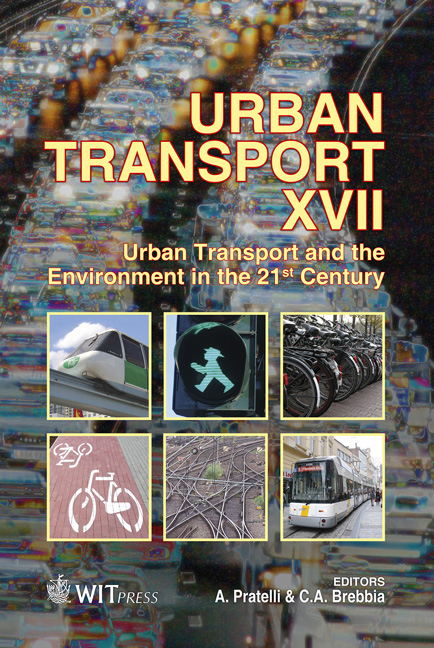An Assessment Of Accessibility Of The Low-income Areas Within The Urban Form In South Africa
Price
Free (open access)
Transaction
Volume
116
Pages
11
Page Range
53 - 63
Published
2011
Size
4,170 kb
Paper DOI
10.2495/UT110051
Copyright
WIT Press
Author(s)
I. M. Röntgen
Abstract
In terms of the Integrated Development Planning (IDP) process in South Africa sectoral plans are being prepared as a forward planning mechanism to integrate land use, transportation planning and service delivery. The instruments used to align and integrate the process are the Spatial development framework (SDF) and Integrated Transport Plan (ITP) that, in the case of this paper, were prepared for the area of jurisdiction of the City of Tlokwe Local Municipality. The paper focuses on an assessment of the spatial components included in the SDF and the ITP so as to promote accessibility and movement of people, goods and services. The accessibility of the low-income residential areas is quantified and qualified based on an independent traffic survey case study related to all access routes (Class 3 and Class 4 roads) in terms of predominant movement between origin and destination (residential nodes and places of work) within the urban structure of the study area. The findings are used to assess the nature and/or structuring components of the spatial system based on dominant land use and traffic movement patterns (inclusive of transportation infrastructure). The paper is concluded with some general recommendations that will be of value in the implementation of similar case studies in intermediate towns within national spatial systems and revision of the City Council of Tlokwe IDP, SDF and ITP. Keywords: accessibility, modeling, simulation, transport planning, land use planning, transportation plans.
Keywords
accessibility, modeling, simulation, transport planning, land use planning, transportation plans





